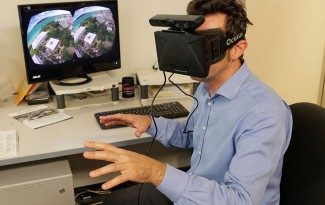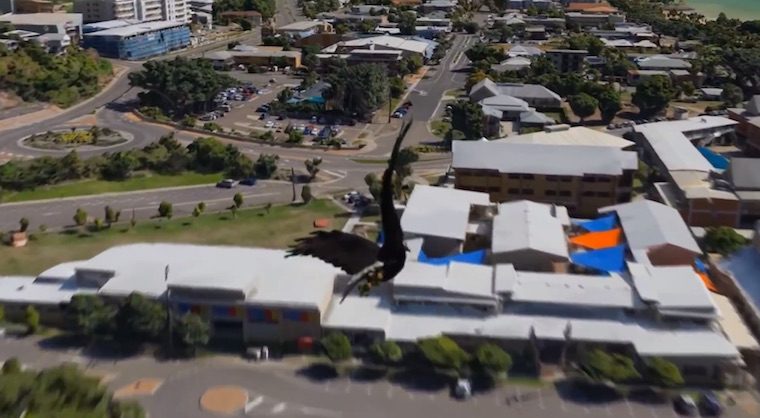Flying in virtual reality, a commonly held wish by enthusiasts since the dawn of the technology. The prospect of swooping over virtual landscapes, your mind convinced your body has taken flight is an extremely enticing one. Now that virtual reality technology is becoming a more and more accessible with the advent of the Oculus Rift, attention turns on how best to achieve this experience. There’s one thing you’ll certainly need for that realistic touch, convincing virtual terrain.
 Australian company Aerometrex are working on just that. They are digital aerial mapping specialists who have focussed on providing realistic captures of towns and cities across the real world in order for them to to be realised in the virtual world.
Australian company Aerometrex are working on just that. They are digital aerial mapping specialists who have focussed on providing realistic captures of towns and cities across the real world in order for them to to be realised in the virtual world.
The company flies dedicated UAVs carrying sophisticated cameras across the desired location capturing extremely high resolution and geospatially mapped photos of the area. Combined with 3D depth sensing technologies (collectively known as aero3Dpro), this allows the company to produce astonishingly accurate and lifelike 3D models based on the captured data.
The captured imagery is adjusted, corrected and assembled by sophisticated software to produce a 3D map you can take a very convincing flight over.
The company recently released a video demonstrating one of their 3D models being presented through the Oculus Rift (video top), and it’s an intriguing idea for presenting and communicating 3D space on such a large scale to people efficiently and effectively. OF course, all I want to do is zoom about pretending to be Superman – something that the video captures quite nicely.
As Aerometrex are focussed on corporate cliental however, it’s currently unclear if they’re ever likely to release tastes of the experiences on offer to the general public. The are apparently working on integrating Myo support, the gesture capturing hardware which senses muscle movement and translates it into input data, which would certainly allow naturalistic flight controls.
You can find more about Aerometrex here, and their dedicated aero3Dpro page here.







